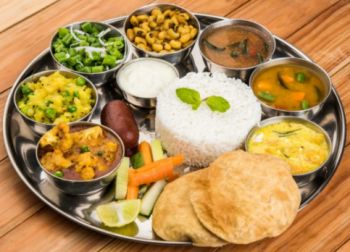Association of Maternal Dietary Diversity and Nutritional Status with Child’s Dietary Diversity and Nutritional Status (2-5 years) in India
Abstract
Dietary diversity is a measure of the number of individual foods or food groups consumed in a given period of time. Consumption of more diverse diets is one of the many approaches to improve the nutrition situation. Malnutrition is linked with quality and quantity of dietary intake. A higher dietary diversity has been associated with better nutritional status in an individual. The present study was designed to assess the dietary diversity of the mother and her child, their nutritional status, and any association between these. The sample comprised of mothers (n=100) and their children aged, 2-5 years (n=100), residing in Shakurpur, an urban slum of Delhi, India. Data on background information, obstetric history, household characteristics, and hygienic practices followed by the mother for herself and for her child, morbidity profile of mother and child, immunization, child feeding practices, and birth information were collected. Anthropometric measurements were taken for both mother and child and were analysed using WHO- Anthro plus software (2010). Moderate wasting, underweight, and stunting were observed in 5%, 18%, and 20% of children respectively, as compared to severe wasting (4%), severe underweight (4%), and severe stunting (10%). No significant difference was observed in the height and weight of boys and girls. A greater proportion of mothers of pre-schoolers were either pre-obese (20%) or obese (9%) than underweight (3%) as per WHO classification, while a little over half (68%) the mothers were of normal weight. The mother’s nutritional status was significantly associated with all the indicators of her child’s nutritional status (p=0.00). The Minimum Dietary Diversity for Women questionnaire (MDD-W, 2016) was used to assess the diversity of the diets. A slight majority of the population, both mothers and children were consuming food from 5 or more food groups. Nearly half of both groups were not achieving adequate dietary diversity. An association between maternal dietary diversity and child dietary diversity (χ2= 14.577, p=0.000) was observed. However, no association was found between dietary diversity of either the child or the mother and the nutritional status of the children (p>0.05). Thus, the present study showed that the diet of the mother and her child as well as the nutritional status of a mother and her child are associated. This re- emphasizes the fact that a mother and child are very closely related.

Authors retain all copyrights. In making a submission to World Nutrition, they are certifying that all material is theirs except quotations, as indicated, and that they have obtained permission for any photos, tables, or graphics taken from other publications or websites.




